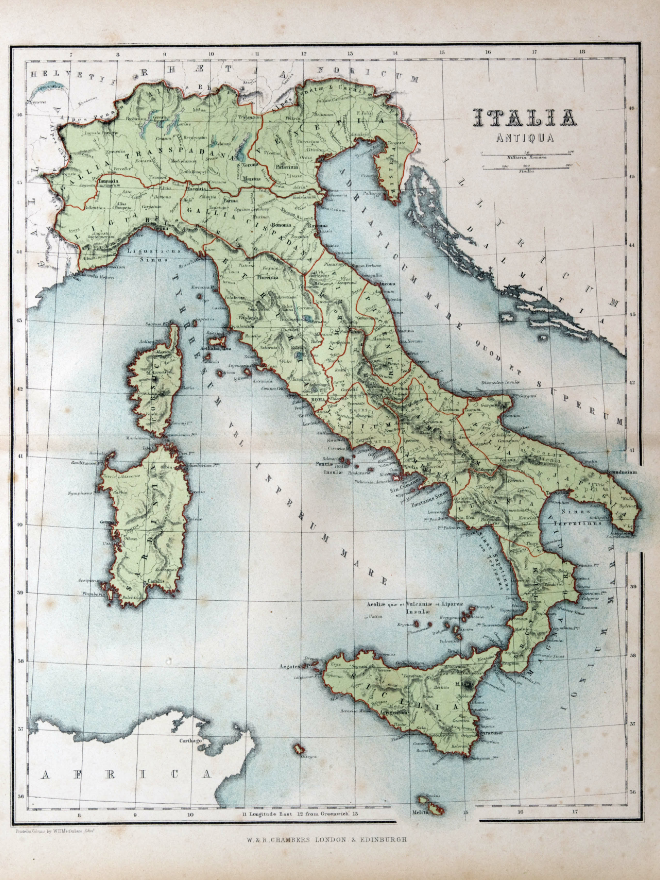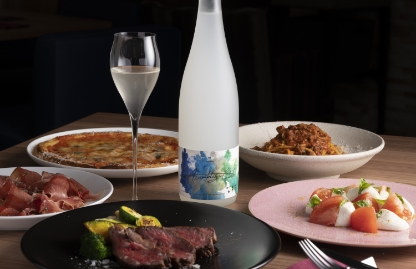
Application Deadline: End of March For shipment around 4/15
Gastronomic delights from around the world await
Part 2 [02].
Why Sake in Italian?
Italy and Japan
Italy's land stretches long from north to south and has four distinct seasons. The warm Mediterranean climate in the south brings rich seafood, olive oil, and abundant vegetables and fruits such as tomatoes, while the cold winds from the Alps in the north have nurtured a culture of meat and cheese produced by dairy and livestock farming. Since the time of the Roman Empire, Italians have valued mealtime above all else. The various roads leading to Rome, including the Emilia Road, also known as the Gastronomic Road, brought about several revolutions and encounters of taste.
Italian food, which has long been a source of great pleasure for families, has become firmly established in the daily diet of the Japanese, with many dishes that are easy to share, such as pizza and pasta, and are simple in preparation and make the most of the flavors of the ingredients.

Italian gastronomy crosses the sea Sake Assemblage and
Encounter.
Italian flavors that should be in the limelight
Tomatoes and cheese are "together"?
In Japanese cuisine, "deaimono" refers to rich flavors born from the encounter between the bounties of the sea and the earth, such as "wakatake-ni (Wakatake stew)," "yellowtail radish," and "tai kabura (sea bream kabura). Like Japan, Italy is a long country stretching from north to south, and different culinary cultures have developed in the north and south, which have come and gone with travelers throughout its long history.
Looking at typical Italian dishes such as pizza and pasta, the meeting of "tomatoes" from the south and "cheese" from the north must have been one of the great revolutions. Parmigiano-Reggiano (Parmesan cheese) is also used on pasta with tomato sauce, as in the case of pizza Margherita, and in dishes such as lasagna and Bolognese, where meat is the main flavor, the tomato sauce does a good job as a middleman, and the taste is completed by plenty of cheese at the end. Caprese is just like that! Today's science proves that it was an "inevitable" combination.


Gastronomic Roads Cross the Sea
Formed the Three Musketeers of Umami
In fact, both tomatoes and cheese are rich in glutamate, which is an important type of "umami. Although the word "umami" did not exist in Italy, people in Italy must have felt the secret of the lingering taste just as we Japanese do. In recent years, "umami" has come to be discussed as an element that determines "deliciousness" all over the world, including Italy. Umami" has overturned the equation of delicious food being high in calories, and is now becoming popular among gourmets around the world, along with the spread of Japanese cuisine.
And glutamic acid is also known to be found in breast milk. Because glutamate is essential for human growth and health, it can be said to be a taste that the body craves. It is the "taste of mamma" that we have tasted since the moment we were born into this world. It is more than just the "taste of home," which is used to mean that there are as many recipes as there are households. Of course, it is a perfect match with sake, which is also rich in umami (glutamic acid). Tomatoes and cheese have met, and now they have crossed the ocean to meet sake to form the "Umami Three Musketeers".


Taste of this time
For this assemblage test, we chose "Pizza Margherita" as a representative dish combining tomato sauce with cheese, which has concentrated "umami" of tomatoes, and looked for a sake flavor that goes well with it. The result was a taste that was sweet and sour compared to the classical sake, with the fresh fruitiness of unpasteurized sake and a clear "umami" flavor, but generally less acidic and more "umami" than wine. The aroma is also mild and accompanies the ingredients. We also added some brands with high sweetness and acidity that also use some white malted rice, as well as some hidden flavors to increase the sense of body.
The resulting flavor goes very well with everything from cured ham and minestrone to focaccia, maritozzo and affogado, not to mention tomato dishes and cheese, in addition to margherita.
Now, it is your turn. Please try this Assemblage Club 02/CODE NAME : Sophia and start your journey of unknown tastes. The "Three Musketeers of Umami," including sake, are surely still hidden in your neighborhood.
Now, the world's gastronomy
We are waiting for you.
Let's start a great voyage together!

Assemblage Club 02CODENAME : Sophia
- assemblage recipe
- private
- raw materials
- Rice (domestic),
Rice malt (domestic rice)
- ratio indicating the quantity of polished rice gained from a given quantity of brown rice (nowadays usually expressed as a percent)
- private
- alcohol content
- thirteen degrees
- content by volume
- 720ml
- Storage Method
- refrigerated storage
- Place of manufacture
- Tokubei Masuda
Shoten
- sales
- Corporation
Leaf Publications, Inc.




